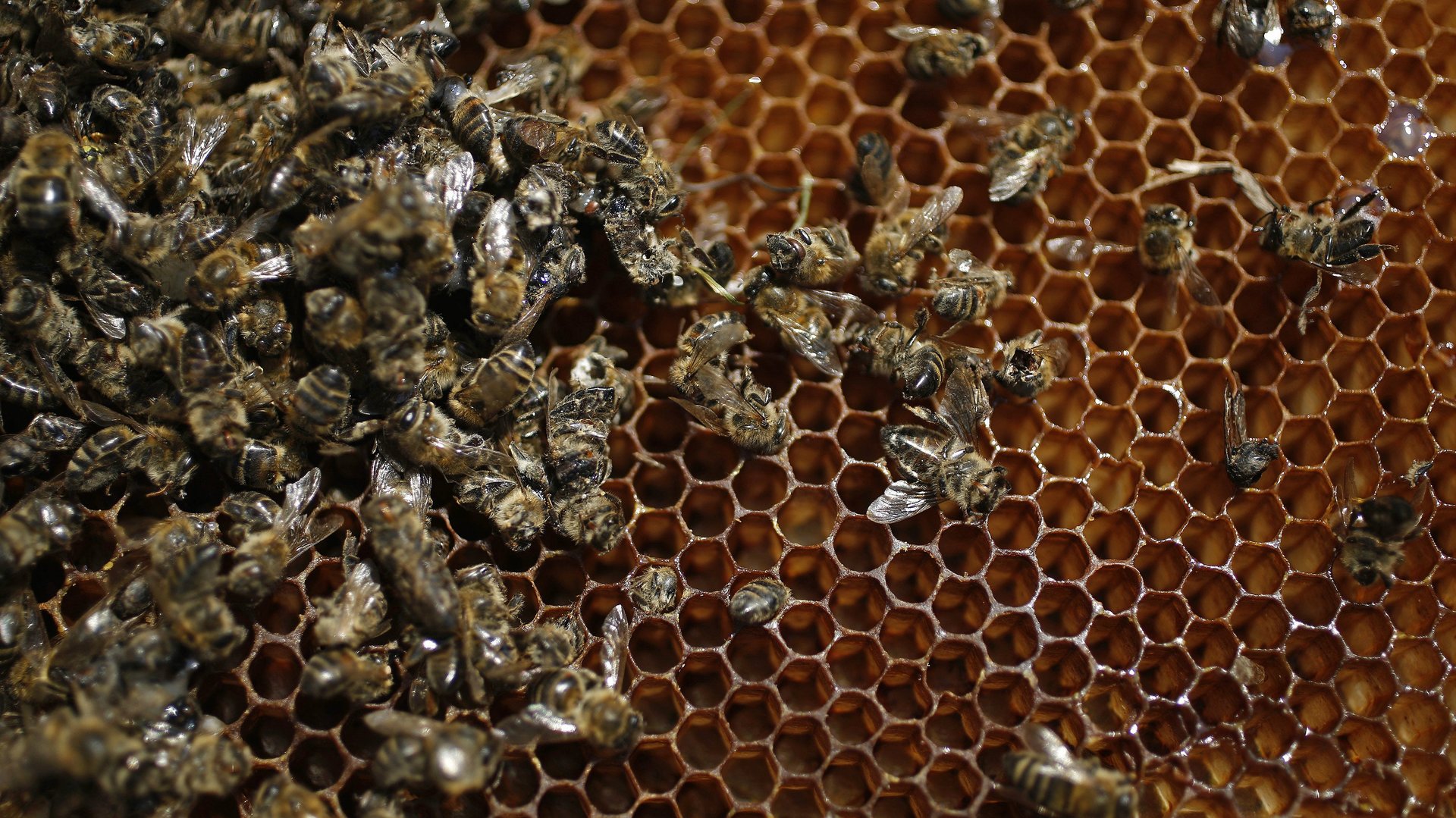Multi-million dollar startups are building tech to spy on honey bees in their own homes
The world’s honey bees need a helping hand. And maybe an eye, too.


The world’s honey bees need a helping hand. And maybe an eye, too.
Bee colonies have been hit hard across the last decade. Between 2015 and 2016 alone, US beekeepers reported in a national survey a loss of 38% of their colonies. Some studies point to invasive mites as one reason for the bee die-off. Others have cited rapidly-changing climates and increased exposure to pesticides. This is alarming, because bees play a crucial role in agricultural operations across the globe, using their natural pollinator know-how to help produce one-third of the food humans eat.
The losses have prompted some of the world’s tech-savvy innovators to try and figure out inventive solutions to the problem. Some companies, such as Edete in Israel, have focused on using robotics to go from plant to plant, working to perform some of the same pollination tasks bees would normally carry out. Others are interested in trying to figure out an answer to the bee die-off problem from the inside-out, by literally getting into the insects’ buzzy hives.
Irish startup ApisProtect just raised $1.8 million in seed funding to use the so-called Internet of Things to monitor beehives in real time, using connected tech to inform beekeepers of temperature, humidity, carbon-dioxide, sound, and movement data. In Israel, BeeHero is working on a similar project, using a system of sensors inside hives to catch problems before they even occur. BeeHero is Omer Davidi’s fourth startup, and he brings to it a background in cybersecurity and machine learning.
Worker bees pollinate plants in the process of leaving the hive, seeking out food, and bringing it back to the queen bee, who doesn’t leave the home. When she’s in her prime and mating, the queen can lay about 2,000 eggs per day, with fully-formed bees taking around 21 to 24 days to form. With all those extra roommates, hives can get warm, Davidi explains. And when hives reach a certain temperature, some of the bees instinctively split off into a second hive. This is an aspect of hive management that beekeepers keep a close eye on. If a hive splits too early or too late, it could prove detrimental to the new hive. Once split, the hives essentially compete over a finite amount of acreage for pollination. That can pose a problem for farmers on smaller farms, where one hive might suffice.
So beekeepers sometimes will want to take creative steps to stop splitting from happening. That’s where the new technology comes into play, by cueing beekeepers early enough for them to add another level to the beehive. Creating more space gives the bees room to expand their work, and keeps the colony cool.
BeeHero is working with commercial beekeepers in California to monitor some 5,000 hives, whose bees pollinate almonds, blueberries, sunflowers, soybeans, and cotton. (Typically an individual hive will hold between 30,000 to 40,000 bees.) The startup, which is headquartered in Tel Aviv, has a satellite office set up in Palo Alto, California, just a few hours drive from some of the richest agricultural lands in America.
ApisProtect, the Irish startup, plans to use some of its latest funding round to expand into California, as well. Already the company says it’s helping to monitor the health of more than 6 million honey bees across Europe and North America.
That’s good news for beekeepers and farmers who’ve felt anxiety in recent years about disappearing colonies. As for the bees, let’s hope they’re alright being under the careful watch of Big Brother’s eye.